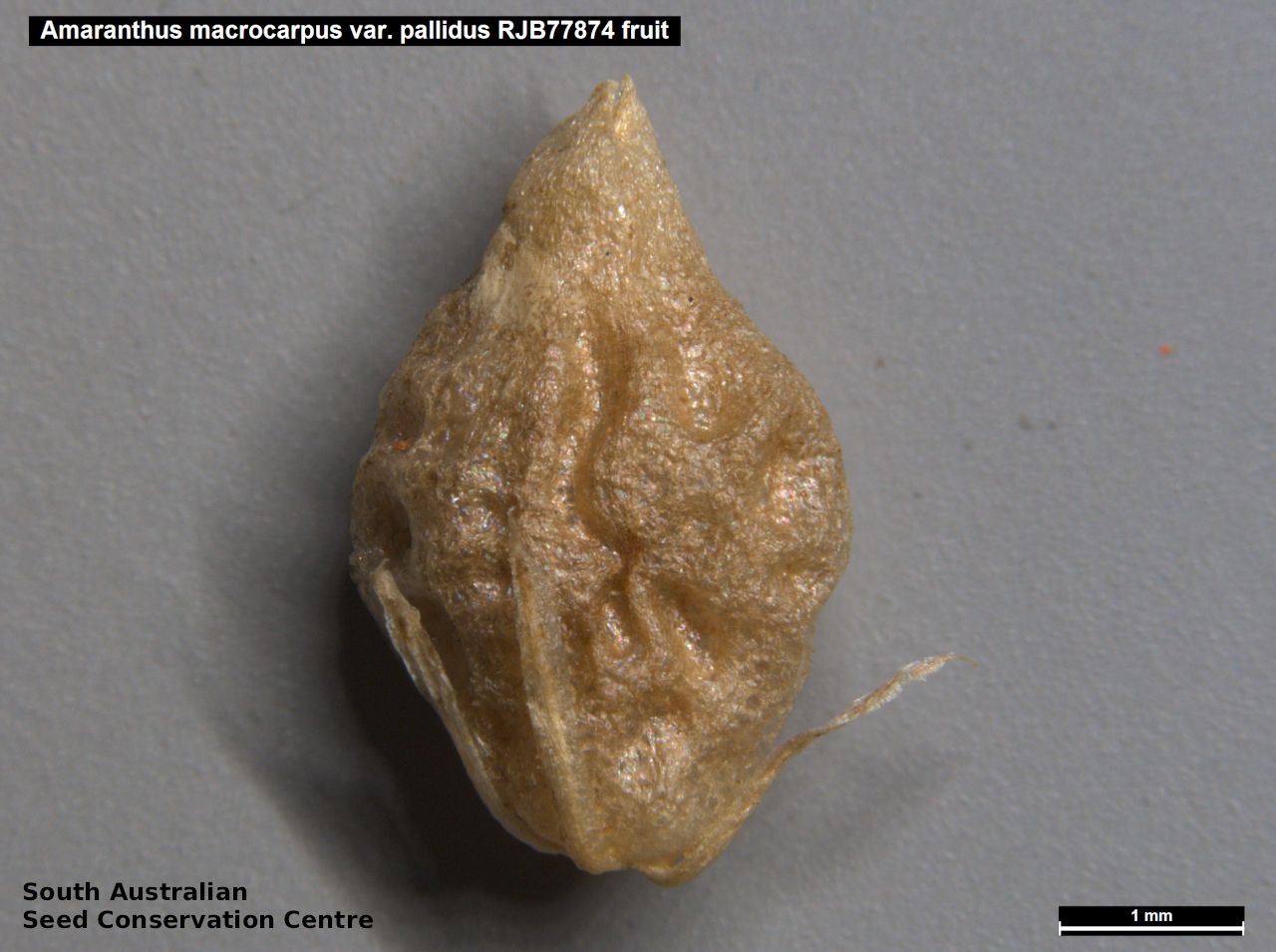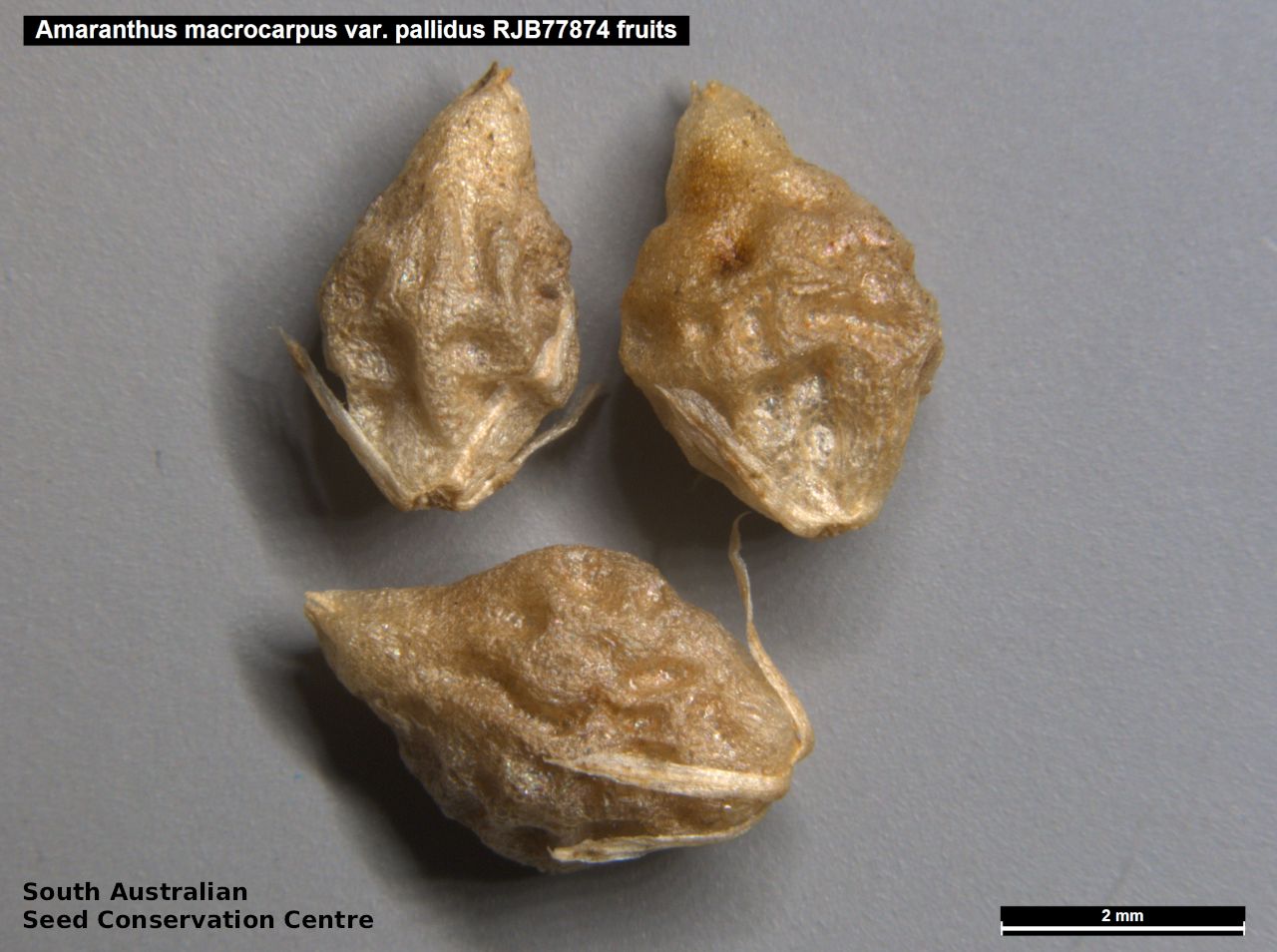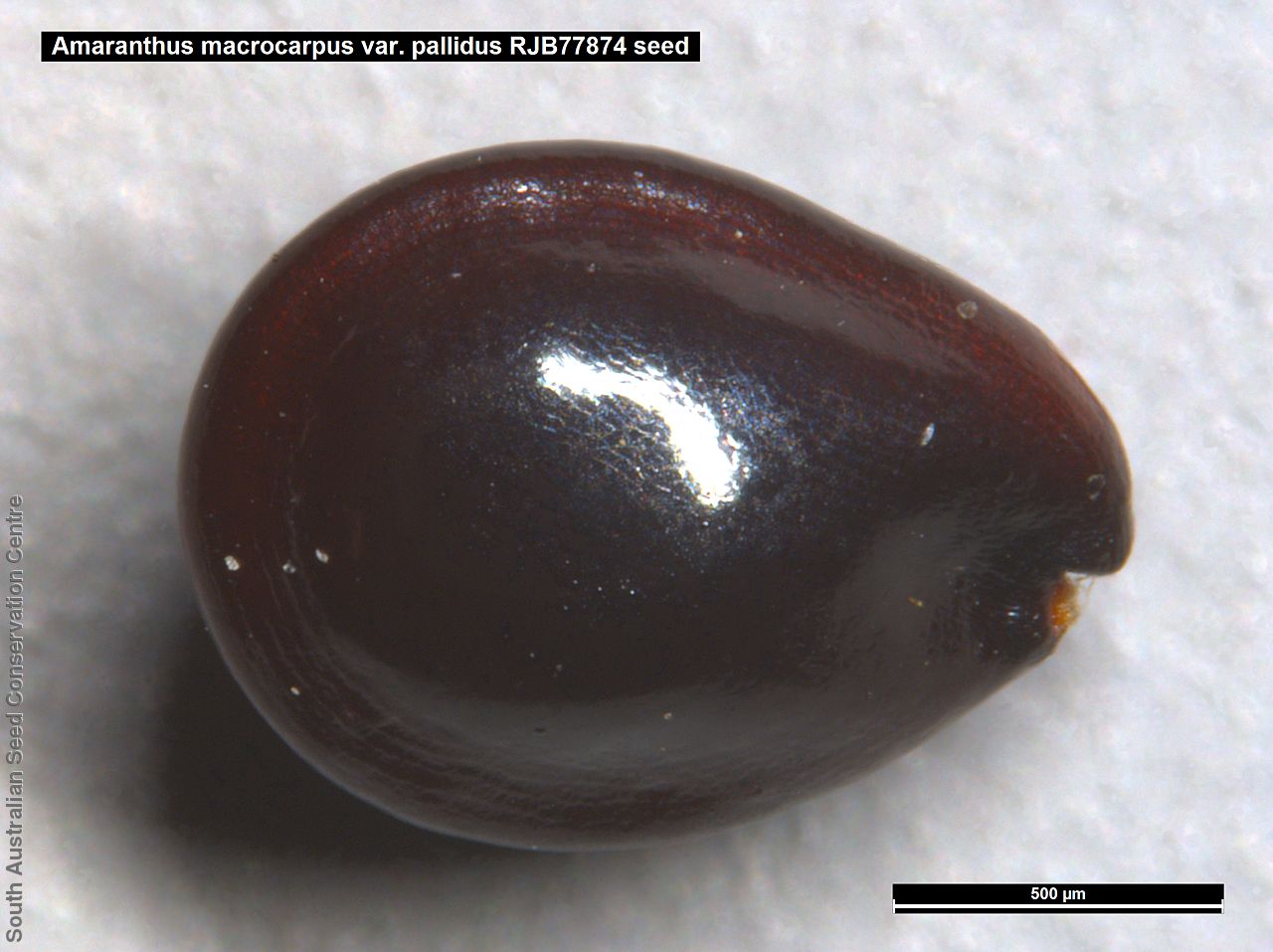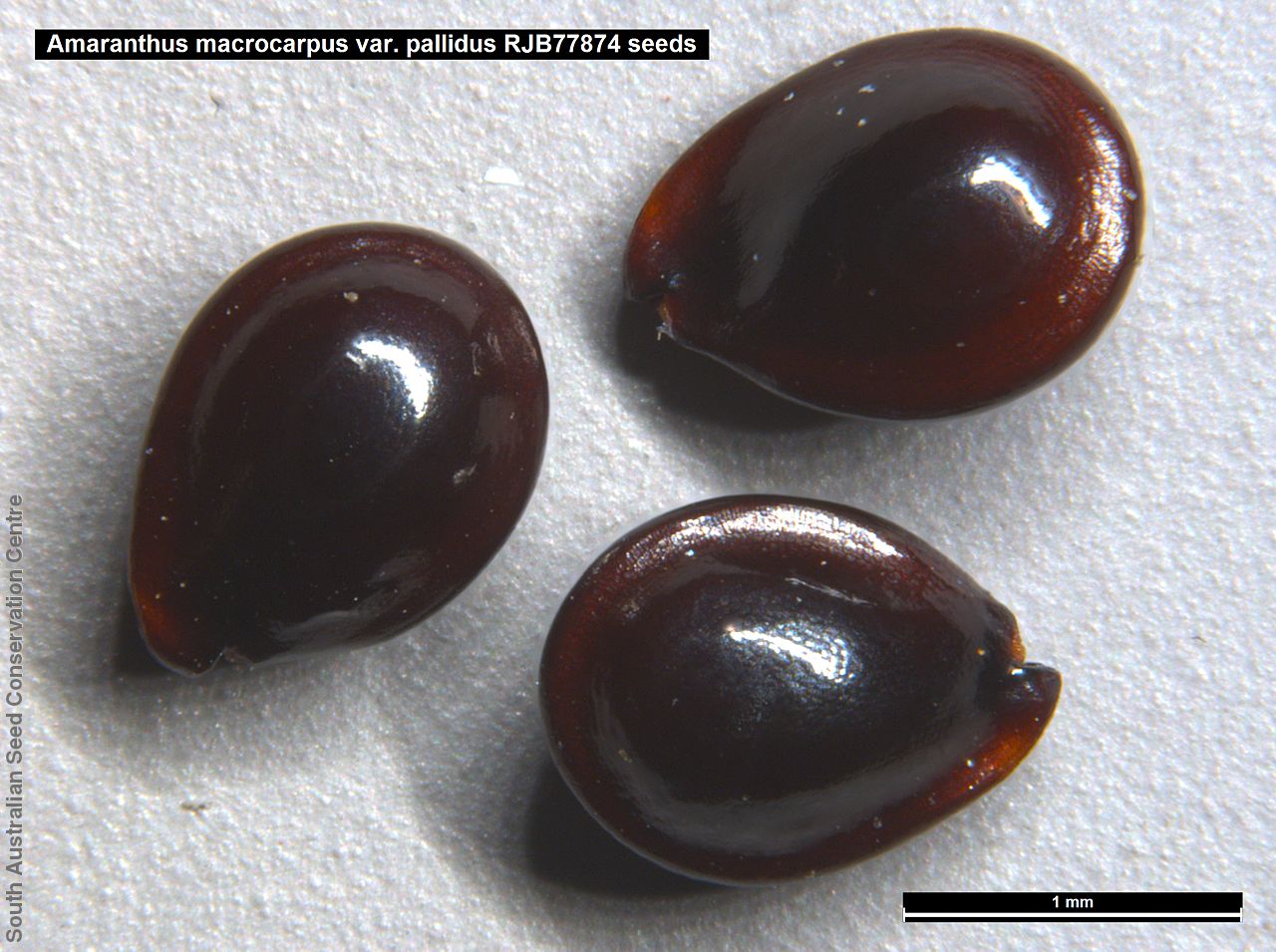





Prior names
Amaranthus macrocarpus
Common names
Pale-fruit Amaranth
Large-fruit Amaranth
Boggabri Weed
Etymology
Amaranthus from the Greek 'a' meaning not and 'marantos' meaning withering, a name used for an everlasting flower. Macrocarpus from the Greek 'macros' meaning large and 'carpos' meaning fruit. Pallidus from Latin meaning pale, referring to the species' large, pale fruit.
Distribution and status
Few records from the eastern region of South Australia, growing on flooded clay along drainage line and old river plain. Also found in Queensland and New South Wales. Native. Rare in South Australia. Common in other states.
Herbarium region: Eastern
NRM region: South Australian Arid Lands
AVH map: SA distribution map (external link)
Plant description
Erect or prostrate annual to 30 cm high. Leaves on petioles to 25 mm long, ovate, oblong or obovate. Inflorescence of dense, globose, axillary clusters to 8 mm long, with predominantly female flowers present. Fruits are clusters of globular spongy fruit, pale straw in colour. Differ from the other variety found in South Australia, Amaranthus macrocarpus var. macrocarpus, which has a dark brown or black fruit. Seeds are semi-flat round black seeds to 1.5 mm across. Seed embryo type is peripheral.
Seed collection and propagation
Collect seeds between January and December. Collect mature capsules, those that are turning a pale straw colour and contain black seeds. Whole stem containing many clusters of fruit can be collected. Place the capsules/stems in a tray and leave to dry for two weeks. Then rub the capsules/stems gently by hand to dislodge the seeds. Use a sieve to separate the unwanted material. Be very careful as the seeds are very small. Store the seeds with a desiccant such as dried silica beads or dry rice, in an air tight container in a cool and dry place. From one collection, the seed viability was average, at 60%. Seeds are non-dormant, viable seed should germinate readily.
| Location | No. of seeds (weight grams) | Number of plants | Date collected | Collection number Collection location | Date stored | % Viability | Storage temperature |
|---|---|---|---|---|---|---|---|
| BGA | 4,500 (5.28 g) | 30 | 13-May-2008 | RJB77874 Eastern | 19-Sep-2008 | 60% | -18°C |
Number of plants: This is the number of plants from which the seeds were collected.
Collection location: The Herbarium of South Australia's region name.
% Viability: Percentage of filled healthy seeds determined by a cut test or x-ray.